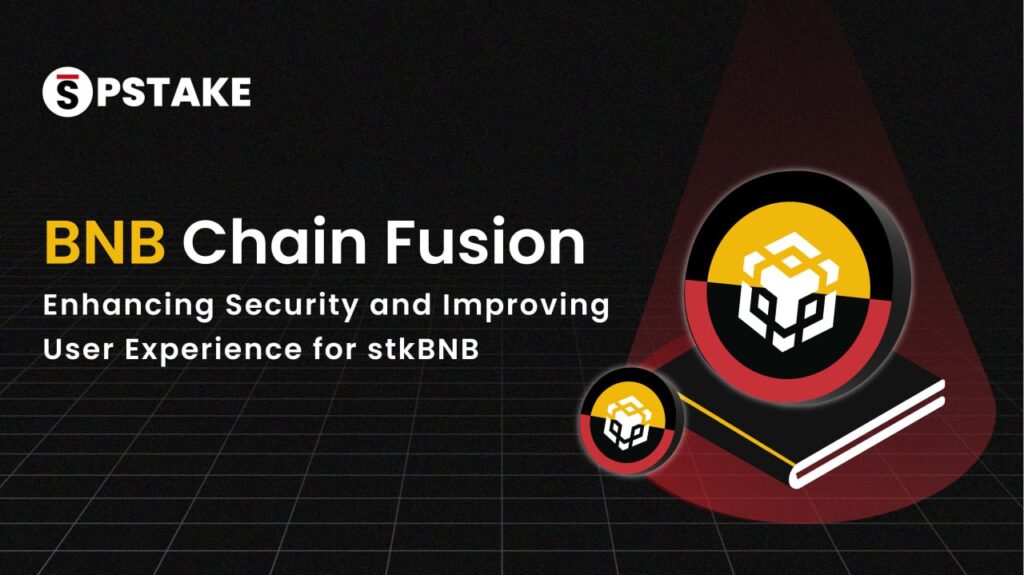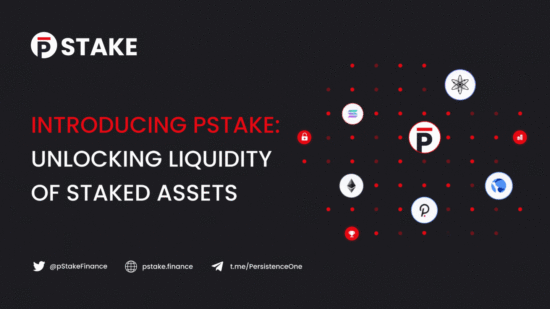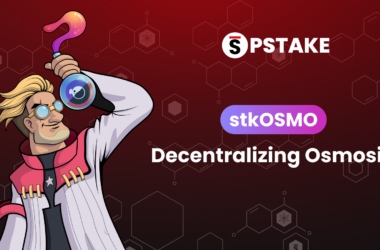In the previous article of this series, we explored the Proof of Stake (PoS) ecosystem and how the natural evolution of PoS is the introduction of liquid staking. Essentially, liquid staking allows users to stake their PoS assets without the restrictions imposed by locked liquidity.
We also previously discussed some of the design considerations when building liquid staking solutions. In this article, we take a deep dive into pSTAKE’s design and how pSTAKE aims to unlock liquidity of some of the most prominent PoS network tokens, thus allowing pSTAKE users to generate additional yield on top of the network staking rewards.
Follow pSTAKE on Twitter to stay up-to-date with the latest developments.
Why pSTAKE?
Most stakers of PoS based tokens are long term believers in the projects’ vision. It is already established that staking is much more beneficial than simply holding tokens; HODLers are continually diluted as new tokens are introduced into the supply through block rewards which are distributed to stakers, essentially rewarding them for securing the network.
However, this long term belief comes at the expense of liquidity; staking positions are illiquid in nature. Though stakers earn block rewards (often referred to as staking rewards) for providing security to the network by participating in the consensus and governance of a chain, stakers cannot use their staked assets for any other purposes because they are locked up on the network.
This is where pSTAKE comes in. pSTAKE creates liquid staked positions by issuing 1:1 pegged representatives against its users’ staked assets. These staked representative tokens can then be used in various DeFi applications to generate additional yield.
pSTAKE has been meticulously designed to effectively address the challenges faced by PoS stakers and improve the end-user experience to drive mass adoption. Let’s explore this in detail.
pSTAKE’s Design
Dual token model
Unlike most liquid staking solutions that currently exist, pSTAKE uses a dual token model to mirror the workings of the underlying blockchain network very closely.
Users deposit their native PoS tokens on pSTAKE to mint and receive pTOKENs which are 1:1 pegged ERC-20 wrapped unstaked tokens, representing unstaked tokens on the PoS network. Users may choose to use pTOKENs in Ethereum’s vast DeFi ecosystem.
On the other hand, users could burn these pTOKENs to mint and receive 1:1 pegged ERC-20 stkTOKENs which represent staked tokens on the underlying supported PoS network. When users mint stkTOKENs, an equivalent amount of the native PoS tokens deposited with pSTAKE are staked on the network (delegated to multiple highly reputed validators). stkTOKENs are always backed 100% by an equivalent amount of staked tokens on the underlying PoS network.
stkTOKENs accrue staking rewards in the form of pTOKENs, thus mirroring the workings of most PoS networks. As an example, when users stake ATOMs, the staking rewards can be claimed at any point in time and are completely liquid, thus giving the users an option to either sell their rewards or restake them to compound their rewards. Similarly, holding stkTOKENs results in the accrual of staking rewards which can be claimed in the form of pTOKENs. These pTOKENs can then be redeemed for the native token instantly.
The dual token model not only mirrors the working of the underlying/supported PoS chain but also acts as a catalyst for the adoption of pSTAKE’s staked representative assets. For pSTAKE to achieve adoption, assets issued by pSTAKE have to be compatible with the broader DeFi ecosystem so that these assets can be easily and comfortably integrated into other products such as borrowing/lending applications.
The dual token model facilitates the use of stkTOKENs in all major DeFi applications. This discussion is outside the scope of this article but will be covered in an upcoming post.
Major components
Now that we have discussed the intricacies of the dual token model, let us understand the key components of pSTAKE and why these components are important.
pSTAKE has two major components — pBridge and pSTAKE smart contracts.
pBridge: A bridge between Ethereum and pSTAKE-supported PoS networks. pBridge can be utilized to mint 1:1 pegged ERC-20 wrapped unstaked representatives of the PoS tokens (pTOKENs — these can be compared to wBTC) and to stake the PoS tokens locked on the bridge. pBridge is a multi-party computation based bridge that is secured by some of the top validators in the Proof of Stake ecosystem.
The overarching goal of pSTAKE is not limited to the issuance of staked representative tokens but it is also designed to drive the adoption of these assets such that these assets are accepted on various DeFi protocols, thus expanding the scope of yield generating avenues for pSTAKE users. To realise this vision, one of our design goals was to issue assets on DeFi mature chains. Being the most widely adopted and DeFi mature chain, Ethereum was an easy choice for the issuance of representative tokens.
The long term goal with pSTAKE is to have a multi-chain product wherein assets can be issued on multiple liquidity abundant and mature chains. This includes issuance of assets on the Persistence blockchain itself.
pSTAKE Smart Contracts: pSTAKE smart contracts on the Ethereum blockchain are responsible for the minting and issuance of wrapped tokens (pTOKENs) and staked representative tokens (stkTOKENs).
Fungibility
stkTOKENs issued are fungible in nature. To achieve this fungibility, assets staked on the PoS network are delegated across a whitelisted set of validators in a predetermined proportion. This proportion of stake distribution will initially be determined by the pSTAKE team and will later be governed by pSTAKE’s governance token holders.
The slashing risks in the ecosystem are shared by all stkTOKEN holders. However, with the distribution of delegation across multiple validators, the slashing risks are mitigated to a large extent.
Over time, pSTAKE will incorporate an insurance fund that will be formed using revenue generated by pSTAKE to cover a portion or all of the slashing costs of stakers in case of a slashing event.
Security of the underlying PoS network
The security of PoS networks is heavily reliant on the decentralisation of the network in terms of the stake distribution of the network. Most PoS networks aim to have more than 1/3 stake on the network, distributed across as many validators as possible.
However, the goal for pSTAKE is to increase the security of the underlying PoS network by whitelisting not just the validators with the largest stake, but also relatively smaller validators with a proven track record of consistent performance and uptime, to receive delegations through pSTAKE to further decentralise the network.
Governance is the most important piece of the puzzle when it comes to PoS networks. While we work on figuring out the optimal solution regarding governance of the underlying network, voting on proposals will be left to the discretion of the validators (as to what they wish to vote on).
Composability
As discussed above, the dual token model of pSTAKE allows for pSTAKE’s stkTOKENs to be used in all types of DeFi protocols, including DEXs, borrowing/lending platforms, yield optimization protocols, and so on.
The balance of stkTOKENs does not keep changing with the accrual of staking rewards, thus making it compatible with most DEXs that require a constant balance token model.
Governance
pSTAKE will be governed by all its stakeholders who will decide on various parameters such as fees, addition of support for other chains, validator whitelist for delegation, pBridge validators, etc.
Next Steps: Onward to a New PoS Paradigm
pSTAKE is unlocking over $100B of staked assets, creating a more flexible environment, and developing more opportunities and utility for PoS assets. This will undoubtedly change the paradigm we all know. DeFi will never be the same again.
pSTAKE will launch with support for Cosmos Network (ATOMs) in early July in a restricted beta launch followed by support for Persistence’s XPRT token. pSTAKE’s alpha launch (on testnet) is scheduled for June 2021. More details regarding this will be released soon.
With pSTAKE launching with support for ATOM, holders of ATOMs can use pSTAKE to earn staking rewards while being able to use stkATOMs to earn additional yield by supplying liquidity to DEXs on Ethereum.
Over time, with the launch of Gravity DEX and Osmosis, pSTAKE users will be also able to leverage the IBC (Inter-Blockchain Communication) protocol to use stkATOMs issued on the Persistence Core chain to supply liquidity on these DEXs within the Cosmos ecosystem.
We will be continually expanding pSTAKE support to other major PoS chains as we progress, including Ethereum 2.0, Terra, Polkadot, Solana and more.









